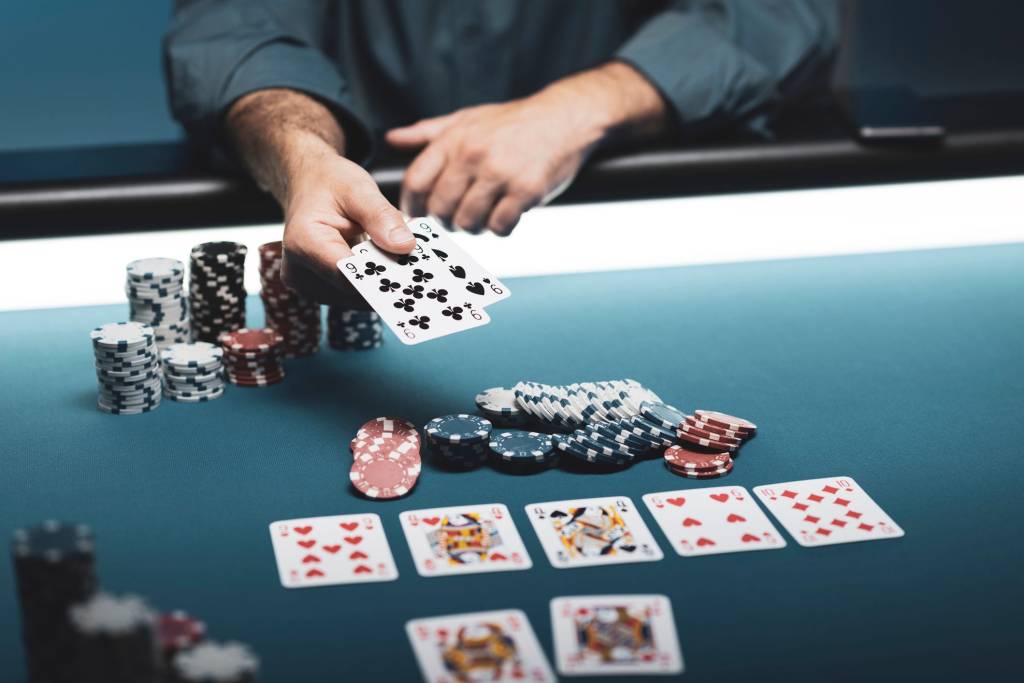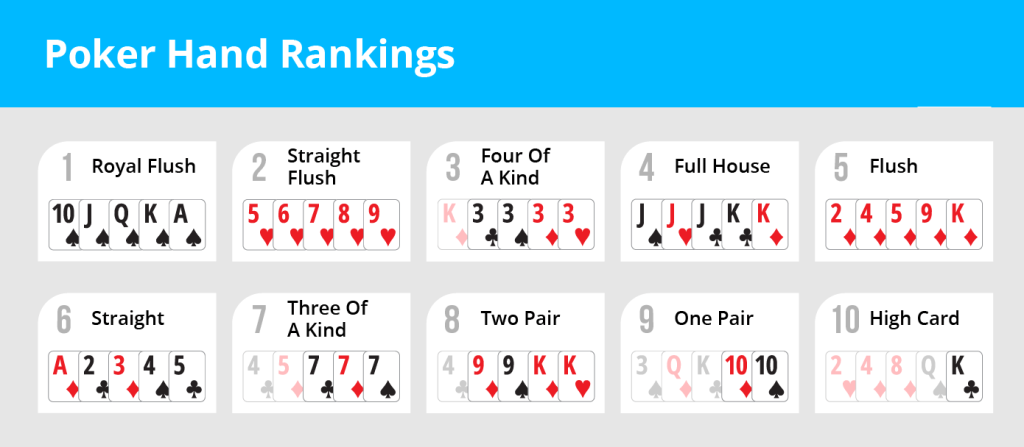California Justin Kuraitis says a poker party is a great party, best with 6 to 10 people. Here’s what you’ll need: Between 6 and 10 players; 7 or 8 makes for a great game. If you have more than 10 players then you’ll need to split into two tables or play will be too slow.
Someone who knows how to play. It’s really going to go better if you have at least one person to explain the rules at the start of the evening,
Enough poker chips, preferably in four colours
500 chips is enough for up to about 10 people.
It’s very reasonable to get nice casino quality chips, they are usually listed as ‘clay’ chips and should weigh 10 or more grams.

A suitable table so you can all sit comfortably round it. For a really fancy game there are some nice table-tops that go over your own table, a cheaper option is some green baize which you can buy the roll.
2 packs of cards with different backs. Proper poker cards have nice clear numbers as people need to be able to read them from the other side of the table.
If you have more than 10 players you’ll need another two packs as you’ll want to split into two tables.
Get cards that have been used in Vegas casinos which adds an authentic touch.
You don’t have any of the stuff then get one of the many poker sets around, they will include the chips, cards and the dealer button. You might also want to print out our helpful list of poker hand nicknames, these are the names people call particular combinations of hole cards. It does sound so much cooler to declare you’ve got “Big Slick” rather than just “A King and an Ace”
There are an infinite variety of poker games. Starting with Texas Hold’Em as it’s currently the most popular so more people are likely to know it. Have a regular game then you might also want to play a few rounds of “dealer calls” where the dealer nominates the game for that round.
Choosing Poker Chips
There are various ‘standards’ for the colour of poker chips and what they are worth; for instance the state of New Jersey defines these:
Colour Value
White 1
Pink 2.5
Red 5
Blue 10
Yellow 20
Green 25
Black 100
However you probably only want to get four colour so a reasonable set of values might be something like 1, 2, 5 and 25. Want to get more of the lower denomination chips than higher; a reasonable ratio is something like 4/3/2/1 so, for instance, you might want to get 400 white, 300 pink, 200 red and 100 blue chips.
Each player needs to start with a good number of chips, say between 30 and 50, and make sure you have enough left to let people re-buy; you only need the larger value chips left for re-buys as the other players can ‘make change’. Not so long ago a nice set was really expensive but they have really come down in price.
It’s not that much to get nice ‘casino quality’ chips. Look for ones listed as ‘clay’ chips weighing 10 – 11.5 grams.
Before the game starts & Go over the basic rules.
It’s fun to give people chips in a ‘virtual’ currency. So if they buy in for 10 pounds/dollars you give them 1,000 pounds/dollars of chips, it just makes all the pots seem much bigger. Obviously when cashing out you reverse the process!
Use two packs of cards: at the end of each hand the dealer collects the card, passes the dealer button on and the next dealer starts dealing the second pack. The old dealer shuffles the cards well then passes them to the player after the current dealer ready for a prompt start to the next hand. This keeps the game moving.
If you have more than 10 people you probably want to split into two tables. As people leave you can combine the tables.
If you’re going to play for cash rather than just chips then there are three golden rules:
Golden rule 1: Make sure everyone knows the key rules, especially on re-buys and cashing out.
Golden rule 2: Keep the chip stash in a safe place and have one nominated person (usually the host) who takes the cash and gives chips in return. This person is the only one allowed to do it and has to make up the shortfall if things don’t add up. Never trust someone else count of the chips, count them again in front of them before handing over cash. Countless games have had ‘unpleasantness’ at the end of the evening when someone miscounts when cashing out, leaves and then there isn’t enough to pay the remaining players.
Golden rule 3: Be fairly strict on the mechanics of the game, proper shuffling & cutting, no string bets, no playing out of turn, re-deal if there’s a misdeal, if a player steps away from the table they still have to play blinds etc.












